Conferencia: Retos de la presidencia de Joe Biden



Reacting to Beijing’s announcement of more tariffs, president raises U.S. tariffs, says ‘we don’t need China’ and takes fresh aim at Fed’s Jerome Powell
President Trump ordered U.S. companies doing business in China to explore relocating their operations and stiffened tariffs on Chinese imports after Beijing unveiled its own new tariffs on U.S. goods, the latest twists in a trade war that showed anew its potency to rattle investors, confound central bankers and cloud the global economy.
Mr. Trump tweeted late Friday afternoon he would raise the tariff rate on existing and planned tariffs by 5 percentage points. Tariffs already in place on about $250 billion of Chinese goods will rise to 30% Oct. 1. Tariffs planned to take effect Sept. 1 and Dec. 15 on a further roughly $300 billion will rise to 15%, officials said.
“We don’t need China and, frankly, would be far better off without them,” Mr. Trump tweeted midmorning Friday after Beijing said it would place added tariffs of 5% and 10% on $75 billion of U.S. imports, phased in from Sept. 1. “Our great American companies are hereby ordered to immediately start looking for an alternative to China, including bringing your companies HOME.”
La nota completa:
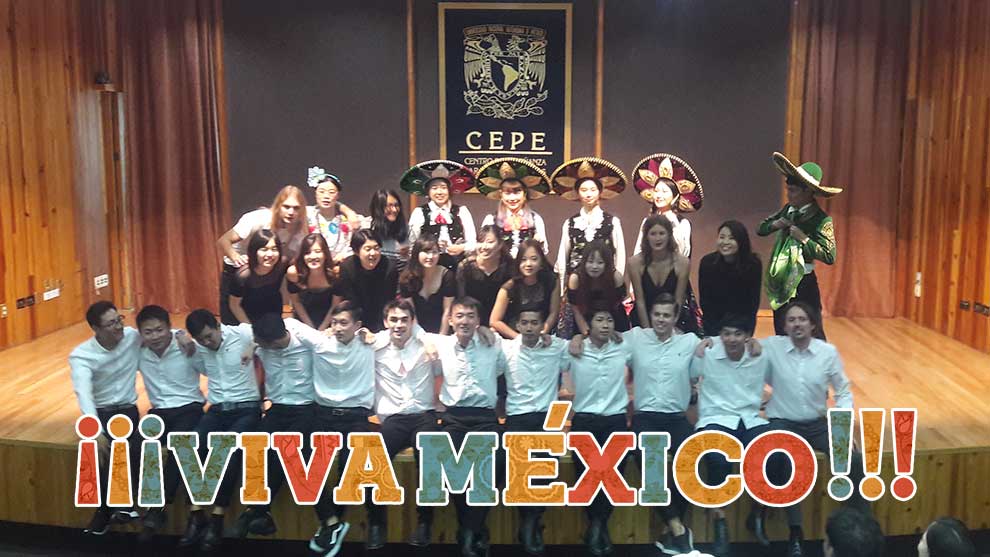
El programa de español y cultura mexicana del CEPE está diseñado para que sus estudiantes no sólo aprenden la lengua, sino adquieran conocimientos culturales que les permitan comunicarse con la comunidad hispanohablante en cualquier parte del mundo donde se hable el español.
Consta de nueve niveles divididos en tres bloques. Por cada nivel el alumno toma 126 horas de clases de español y cultura mexicana.
Las actividades que realizan son combinadas con clases, donde además de aprender español, se divierten, como lo hacen a través del Taller de Danza a cargo de la maestra Blanca Heredia, quien por varios años lleva dando clases de baile a estudiantes de varias nacionalidades como Japón, Suiza, Bélgica, Noruega, Nueva Zelanda entre otras.
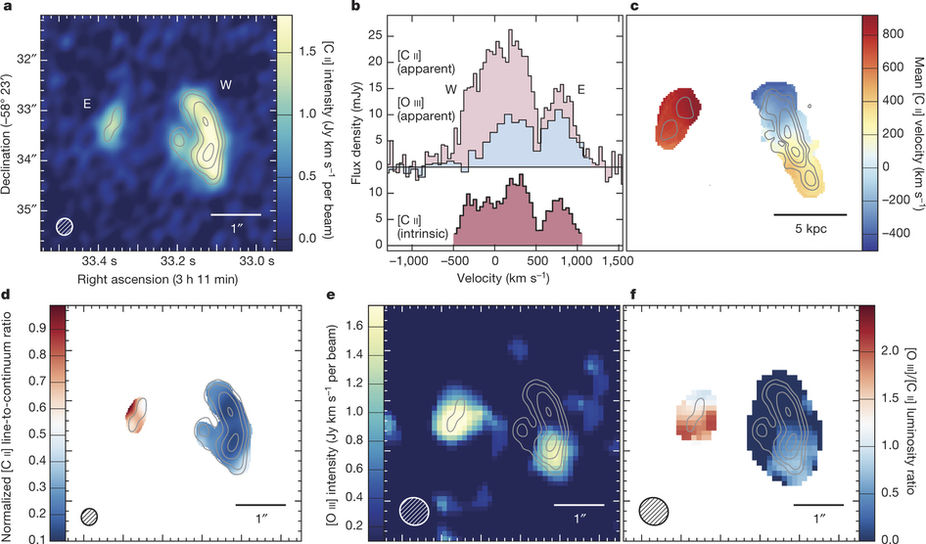
According to the current understanding of cosmic structure formation, the precursors of the most massive structures in the Universe began to form shortly after the Big Bang, in regions corresponding to the largest fluctuations in the cosmic density field1,2,3. Observing these structures during their period of active growth and assembly—the first few hundred million years of the Universe—is challenging because it requires surveys that are sensitive enough to detect the distant galaxies that act as signposts for these structures and wide enough to capture the rarest objects.
As a result, very few such objects have been detected so far4,5. Here we report observations of a far-infrared-luminous object at redshift 6.900 (less than 800 million years after the Big Bang) that was discovered in a wide-field survey6. High-resolution imaging shows it to be a pair of extremely massive star-forming galaxies.
The larger is forming stars at a rate of 2,900 solar masses per year, contains 270 billion solar masses of gas and 2.5 billion solar masses of dust, and is more massive than any other known object at a redshift of more than 6. Its rapid star formation is probably triggered by its companion galaxy at a projected separation of 8 kiloparsecs. This merging companion hosts 35 billion solar masses of stars and has a star-formation rate of 540 solar masses per year, but has an order of magnitude less gas and dust than its neighbour and physical conditions akin to those observed in lower-metallicity galaxies in the nearby Universe7.
These objects suggest the presence of a dark-matter halo with a mass of more than 100 billion solar masses, making it among the rarest dark-matter haloes that should exist in the Universe at this epoch.

Human liver cancer research currently lacks in vitro models that can faithfully recapitulate the pathophysiology of the original tumor. We recently described a novel, near-physiological organoid culture system, wherein primary human healthy liver cells form long-term expanding organoids that retain liver tissue function and genetic stability. Here we extend this culture system to the propagation of primary liver cancer (PLC) organoids from three of the most common PLC subtypes: hepatocellular carcinoma (HCC), cholangiocarcinoma (CC) and combined HCC/CC (CHC) tumors. PLC-derived organoid cultures preserve the histological architecture, gene expression and genomic landscape of the original tumor, allowing for discrimination between different tumor tissues and subtypes, even after long-term expansion in culture in the same medium conditions. Xenograft studies demonstrate that the tumorogenic potential, histological features and metastatic properties of PLC-derived organoids are preserved in vivo. PLC-derived organoids are amenable for biomarker identification and drug-screening testing and led to the identification of the ERK inhibitor SCH772984 as a potential therapeutic agent for primary liver cancer. We thus demonstrate the wide-ranging biomedical utilities of PLC-derived organoid models in furthering the understanding of liver cancer biology and in developing personalized-medicine approaches for the disease.
More information: https://www.nature.com/articles/nm.4438
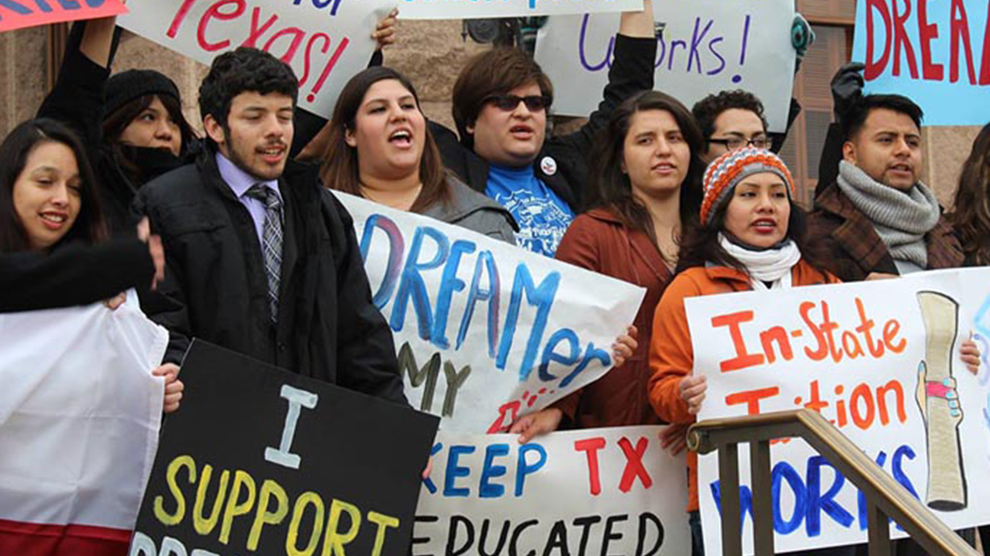
In the brief, the schools focus on the effects the repeal of DACA will have on their DACA-protected students and recent graduates whose status as U.S. residents depends on the program; the impact that ending DACA would have on the institutions’ ability to attract the most talented students; and the loss to the nation if these individuals are not able to stay in the U.S. and use their talents and education to contribute to society.
Those students, the brief notes, are some of the most gifted and motivated young people in the world. However, with the repeal of DACA, the brief adds, many students now risk being unable to obtain the “full and complete education” they have been working toward since being brought to the U.S. as children.
U.S. residents dependent on DACA are often referred to as “Dreamers,” after the proposed legislation known as the “DREAM Act,” which was introduced in Congress over a decade ago but has not yet passed.
The brief highlights the real-life situations of a number of undocumented students and recent graduates, including two MIT students — one a recent graduate, the other still enrolled — who have benefited from the protections afforded by DACA.
One of them, Jose Gomez ’17, an aerospace engineering major who participated in NASA research as an MIT student, was brought to the U.S. by his family at age 5; he is now working for a robotics startup and is a public advocate for DACA. The other, sophomore Johan Villanueva, is a chemical engineering major who graduated second in his class from Chicago’s largest public high school after serving as a co-captain of the math team, volunteering to help the homeless, and being named to the National Honor Society.
“Though they are called Dreamers, these young people are doers, in the best American tradition,” says MIT President L. Rafael Reif. “They are undocumented through no fault of their own. And when our government offered them an opportunity to come out of the shadows, they did — because they trusted that they would not be punished for doing so. I believe that as a nation we owe them fairness and certainty.”
The brief was submitted in support of the plaintiffs in State of California, et al. v. U.S. Department of Homeland Security, et. al, and Regents of University of California, et al. v. U.S. Department of Homeland Security, et al., and was filed on Nov. 1. For purposes of the issues the court is currently considering, these cases have been consolidated with two other cases challenging DACA. MIT expects to join its peers in filing a similar brief in a lawsuit filed in New York by 16 states (including Massachusetts) and the District of Columbia.
Legal residents hope for permanent status
The DACA program, established by the Obama administration in 2012, applies to about 800,000 U.S. residents who were brought to the country as children but have not acquired legal immigration status. In September, the Trump administration announced the rescission of the DACA program, effective in March 2018.
Under DACA, Dreamers were permitted to reside in the U.S. without fear of deportation and were able to obtain authorization to work legally. DACA protection lasted for two years (with renewals possible) but did not include a standardized path to citizenship.
Under the specific terms of the rescission, those with DACA status could lose their protections as early as March 2018, although some have applied for a two-year extension of this protection before an October 2017 deadline.
MIT’s amicus brief makes the case that DACA recipients, who by definition are the product of this nation’s education system, have much to give back to the country that raised them. Rescinding DACA, the brief argues, would waste a tremendous national investment by forcing these talented young people to return to the shadows of our society.
“Every MIT student deserves the same opportunities to study, to work, to travel — in short, to thrive here,” says MIT Chancellor Cynthia Barnhart. “By joining our peer institutions in filing this amicus brief to preserve the DACA program, we are again showing that MIT stands firmly behind our nation’s Dreamers. And by continuing to provide MIT’s DACA students with the direct support and resources they need during this uncertain time, we are showing that our commitment to them will not change, regardless of what happens in Washington.”
In a Washington Post/ABC News poll released in September, 86 percent of respondents said they supported the DACA program.
Overview: MIT’s resources for Dreamers
The new amicus brief is one example of many activities MIT has engaged in to support international members of its community in the face of changing immigration policy. These measures include public advocacy on the subject by MIT President L. Rafael Reif, dedicated legal support for DACA students, information briefings on campus, an MIT working group to monitor post-election changes in federal policies, and multiple open letters to the entire MIT community informing them about the Institute’s evolving efforts and resources on this front. MIT has also joined with groups of colleges and universities to issue open letters in support of DACA and the Dreamers.
President Reif has emerged as a high-profile advocate on behalf of the Dreamers. In an opinion piece published in The Boston Globe on Aug. 31, he stated that pushing Dreamers out of the U.S. would constitute “throwing away a tremendous national investment.”
In the piece, Reif added, terminating the DACA program would also be “a violation of deep American principles. The plight of the Dreamers presents a profound question of fairness. Often starting from harsh personal circumstances, these young people have done what any American family might dream of for their child: Study hard, aim high, and earn a degree or a place in college or the military, on the road to a productive career.”
Reif also joined the Dream Coalition, a nonprofit advocacy group with national scope that is seeking a permanent legislative solution for DACA-eligible U.S. residents — a step he also endorsed in his Boston Globe piece.
This fall, MIT partnered with an outside immigration attorney to provide all DACA students with free legal consultations.
In January of 2017, MIT also established a Post-Election Working Group to monitor and evaluate the evolution of federal policy regarding immigration and other related topics. In coordination with the Office of the Chancellor and the Office of the General Counsel, the group, chaired by associate professor of history Christopher Capozzola, has hosted two on-campus immigration briefings to inform the community of current developments. MIT has also developed FAQ pages available to the community, and, through the International Students Office and International Scholars Office, provides travel advice and other guidance to students and community members.
This September, MIT joined a letter issued by 57 members of the Association of American Universities, calling for Congress to enact permanent legislation on DACA. In October, MIT was one of nearly 800 institutions signing on to a letter from the American Council on Education that also called for a “long-term legislative fix as soon as possible to protect Dreamers,” terming such a policy “in America’s best interest.”

The Prakash Lab at Stanford, led by Manu Prakash, assistant professor of bioengineering, is looking for citizen scientists to contribute to Abuzz, a mosquito monitoring platform the lab developed to produce the most detailed global map of mosquito distribution. All that’s required to participate is a cellphone to record and submit the buzz of a mosquito, which means almost anyone from around the world can take part in this work.
More than mere pests, mosquitoes can carry deadly diseases, including malaria, yellow fever, dengue, West Nile virus, chikungunya and Zika. Diseases spread by mosquitoes result in millions of deaths each year and the burden of their effects is carried most strongly by places with the fewest resources.
“We could enable the world’s largest network of mosquito surveillance – just purely using tools that almost everyone around the world now is carrying in their pocket,” said Prakash, who is senior author of a paper that demonstrates the feasibility of this approach, published in the Oct. 31 issue of eLife. “There are very limited resources available for vector surveillance and control and it’s extremely important to understand how you would deploy these limited resources where the mosquitoes are.”
With enough contributions from citizen scientists around the world, Abuzz could create a map that tells us exactly when and where the most dangerous species of mosquitoes are most likely to be present and that could lead to highly targeted and efficient control efforts.
“If you see a mosquito and you swat it, you’ve saved yourself an itch for one day. But if you see a mosquito and you record it and you send the data to the Abuzz project, then you’ve potentially contributed to an effort that can reduce the burden of mosquito-borne disease for many generations in the future, hopefully,” said Haripriya Mukundarajan, a graduate student in the Prakash Lab and lead author of the paper.
Abuzz is a low-cost, fast, easy way to gain an incredible amount of new data about mosquitoes. Contributing to this research is as simple as holding a cellphone microphone near a mosquito, recording its hum as it flies and uploading the recording to the Abuzz website. The researchers take the raw signal, clean up that audio to reduce background noise and run it through an algorithm that matches that particular buzz with the species that is most likely to have produced it.
Once the match is found, the researchers will send the person who submitted the recording information about the mosquito they found and mark every recording on a map on the website, showing exactly where and when that mosquito species was sighted.
Critical to the success of Abuzz is the fact that mosquito species can be differentiated by the frequency of their wingbeats, which is what produces their characteristic whine. Knowing this, Prakash and his team created a mosquito sound library, organized by species, which powers the matching algorithm. Overall, the researchers captured about 1,000 hours of mosquito buzzing from 18 lab-reared and two wild mosquito species, all of which were species relevant to human health.
Recognizing that people who could benefit most from Abuzz may not have access to the latest smartphones, the researchers designed the platform so that it can work off recordings from almost any model of cellphone. Most of the data they focused on in the study was recorded on a $20 clamshell-style cellphone from 2006.
Further simplifying the process, the Abuzz algorithm has worked using as little as one fifth of a second of sound – although recordings that are a second or longer are the most desirable. Such basic requirements mean that merely recording near a mosquito just as it takes off from a surface is enough to create an Abuzz-worthy recording.
To assure that Abuzz works the way they’ve intended, the researchers ran a field test with 10 local volunteers in a village in Ranomafana, Madagascar in 2016. It took about 10 minutes to train these citizen scientists. The next day, they returned with 60 recordings that spanned three hours.
“It was very easy to tell people what to do and people were very eager to participate,” recalled Felix Hol, a postdoctoral research fellow and co-author of the paper who helped conduct this field study. “Just 10 minutes of training and they could actually produce a lot of very usable data. That was a very beautiful experience for me.”
For any of the grandest aims of Abuzz to be possible, it needs engagement from citizen scientists. Without those contributions, it cannot reach its full potential. The group intends to release an app to facilitate community engagement in the near future and have already produced detailed training videos.
“What I would love to see is people engaging in the problem,” Prakash said. “Try to join the platform. Record mosquitoes. Learn about the biology. And in that process, you will be supporting the kind of research and scientific data that we and medical entomologists around the world so desperately need and, at the same time, you will be making your own community safer.”
Additional co-authors of this paper are Erica Castillo and Cooper Newby, both of Stanford. Prakash is also a member of Stanford Bio-X and Stanford ChEM-H, an affiliate of the Stanford Woods Institute for the Environment and senior fellow at Center for Innovation in Global Health.
This work was funded by Stanford University, the Stanford Woods Institute for the Environment, the Howard Hughes Medical Institute (HHMI), NWO Rubicon, the National Science Foundation, the Bill and Melinda Gates Foundation, the PEW Foundation, the MacArthur Foundation, the Coulter Foundation, the National Institutes of Health, and the United States Agency for International Development.
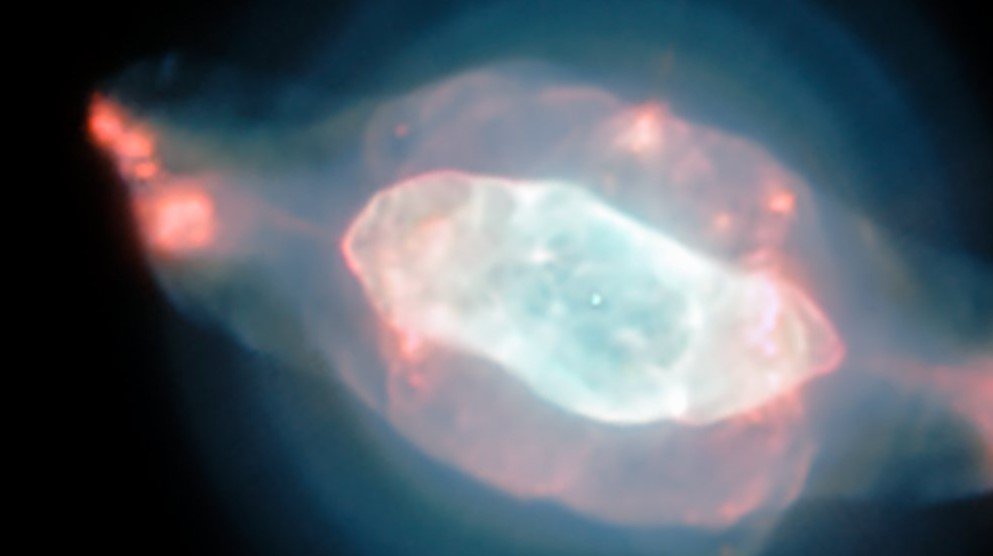
The spectacular planetary nebula NGC 7009, or the Saturn Nebula, emerges from the darkness like a series of oddly-shaped bubbles, lit up in glorious pinks and blues.
This colourful image was captured by the powerful MUSE instrument on ESO’s Very Large Telescope (VLT), as part of a study which mapped the dust inside a planetary nebula for the first time.
The video is available in 4K UHD.
The ESOcast Light is a series of short videos bringing you the wonders of the Universe in bite-sized pieces. The ESOcast Light episodes will not be replacing the standard, longer ESOcasts, but complement them with current astronomy news and images in ESO press releases.
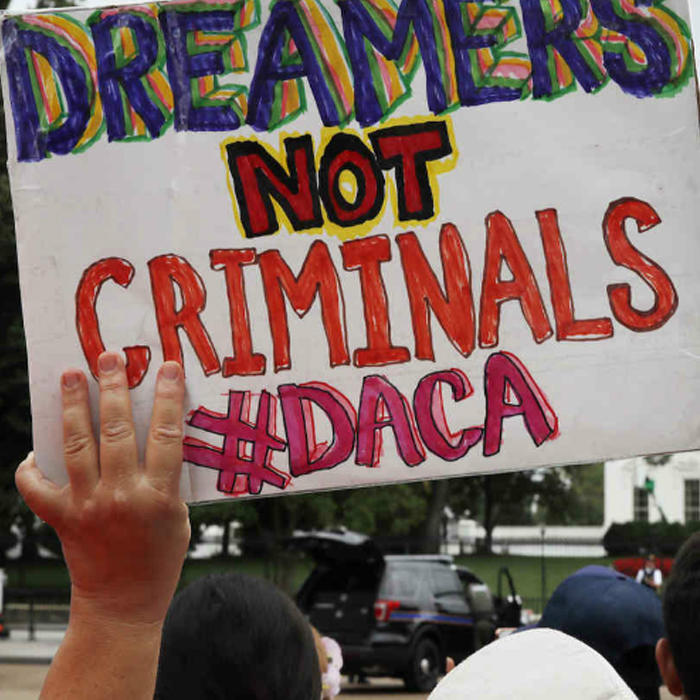
Trump llevó a cabo esta acción porque como presidente ha perdido mucho, no ha logrado una sola ley en el Congreso, y no ha podido cumplir con ninguna de sus promesas de campaña. Se trata de un acto político con una gran carga racista que corresponde a muchas de las acciones del propio presidente norteamericano.
Muchos de estos dreamers no hablan español, no han visitado sus países de origen y realmente sus vidas están en los Estados Unidos, donde más del 90 por ciento de ellos estudian y trabajan, alrededor del seis por ciento han iniciado un negocio, y seis por ciento han adquirido propiedades, resaltó Morales Ramírez.
De acuerdo a algunos análisis, si estos jóvenes salieran del país se perderían alrededor de 500 mil millones de dólares del Producto Interno Bruto en un periodo de 10 años, reveló el académico.
Además, existen algunas cuestiones por resolver, por ejemplo, el Congreso debe una ley migratoria desde hace más de dos décadas, ellos podrían legislar para dar algún tipo de seguridad migratoria a estos jóvenes.
Mientras tanto, el presidente de la Cámara de Representantes, Paul Ryan, comentó que se han vinculado republicanos y demócratas, además del Senado, para acodar algún mecanismo de ley migratoria, destacó.
Igualmente, el Departamento de Seguridad Interna se abrió para que los dreamers, cuya estancia termina el próximo 5 de marzo, puedan solicitar una prórroga de dos años, pero esto no significa que se otorgará a todos, simplemente es una posibilidad.
Se trata de un proceso costoso, porque la deportación es muy compleja, situación que abre la puerta a un ambiente racista y de rechazo por una base electoral que no va más allá del 30 por ciento.
“Esto nos habla, una vez más, de un presidente que lleva a cabo acciones desesperadas y políticas, un presidente solitario con ejercicios desesperados”, concluyó el experto.[/vc_column_text][/vc_column][/vc_row]

Scientists for the first time have successfully edited genes in human embryos to repair a common and serious disease-causing mutation, producing apparently healthy embryos, according to a study published on Wednesday.
The research marks a major milestone and, while a long way from clinical use, it raises the prospect that gene editing may one day protect babies from a variety of hereditary conditions.
But the achievement is also an example of genetic engineering, once feared and unthinkable, and is sure to renew ethical concerns that some might try to design babies with certain traits, like greater intelligence or athleticism.
The study, published in the journal Nature, comes just months after a national scientific committee recommended new guidelines for modifying embryos, easing blanket proscriptions but urging it be used only for dire medical problems.
“We’ve always said in the past gene editing shouldn’t be done, mostly because it couldn’t be done safely,” said Richard Hynes, a cancer researcher at the Massachusetts Institute of Technology who co-led the committee. “That’s still true, but now it looks like it’s going to be done safely soon,” he said, adding that the research is “a big breakthrough.”
“What our report said was, once the technical hurdles are cleared, then there will be societal issues that have to be considered and discussions that are going to have to happen. Now’s the time.”
Scientists at Oregon Health and Science University, with colleagues in California, China and South Korea, reported that they repaired dozens of embryos, fixing a mutation that causes a common heart condition that can lead to sudden death later in life.
If embryos with the repaired mutation were allowed to develop into babies, they would not only be disease-free but also would not transmit the disease to descendants.
The researchers averted two important safety problems: They produced embryos in which all cells — not just some — were mutation-free, and they avoided creating unwanted extra mutations.
“It feels a bit like a ‘one small step for (hu)mans, one giant leap for (hu)mankind’ moment,” Jennifer Doudna, a biochemist who helped discover the gene-editing method used, called CRISPR-Cas9, said in an email.
“I expect these results will be encouraging to those who hope to use human embryo editing for either research or eventual clinical purposes,” said Dr. Doudna, who was not involved in the study.
Much more research is needed before the method could be tested in clinical trials, currently impermissible under federal law. But if the technique is found to work safely with this and other mutations, it might help some couples who could not otherwise have healthy children.
Potentially, it could apply to any of more than 10,000 conditions caused by specific inherited mutations. Researchers and experts said those might include breast and ovarian cancer linked to BRCA mutations, as well as diseases like Huntington’s, Tay-Sachs, beta thalassemia, and even sickle cell anemia, cystic fibrosis or some cases of early-onset Alzheimer’s.
“You could certainly help families who have been blighted by a horrible genetic disease,” said Robin Lovell-Badge, a professor of genetics and embryology at the Francis Crick Institute in London, who was not involved in the study.
The researchers also discovered something unexpected: a previously unknown way that embryos repair themselves.
In other cells in the body, the editing process is carried out by genes that copy a DNA template introduced by scientists. In these embryos, the sperm cell’s mutant gene ignored that template and instead copied the healthy DNA sequence from the egg cell.
“We were so surprised that we just couldn’t get this template that we made to be used,” said Shoukhrat Mitalipov, director of the Center for Embryonic Cell and Gene Therapy at Oregon Health and Science University and senior author of the study. “It was very new and unusual.”
The research significantly improves upon previous efforts. In three sets of experiments in China since 2015, researchers seldom managed to get the intended change into embryonic genes.
And some embryos had cells that did not get repaired — a phenomenon called mosaicism that could result in the mutation being passed on — as well as unplanned mutations that could cause other health problems.
In February, a National Academy of Sciences, Engineering and Medicine committee endorsed modifying embryos, but only to correct mutations that cause “a serious disease or condition” and when no “reasonable alternatives” exist.
Sheldon Krimsky, a bioethicist at Tufts University, said the main uncertainty about the new technique was whether “reasonable alternatives” to gene editing already exist.
As the authors themselves noted, many couples use pre-implantation genetic diagnosis to screen embryos at fertility clinics, allowing only healthy ones to be implanted. For these parents, gene editing could help by repairing mutant embryos so that more disease-free embryos would be available for implantation.
Hank Greely, director of the Center for Law and the Biosciences at Stanford, said creating fewer defective embryos also would reduce the number discarded by fertility clinics, which some people oppose.
The larger issue is so-called germline engineering, which refers to changes made to embryo that are inheritable.
“If you’re in one camp, it’s a horror to be avoided, and if you’re in the other camp, it’s desirable,” Dr. Greely said. “That’s going to continue to be the fight, whether it’s a feature or a bug.”
For now, the fight is theoretical. Congress has barred the Food and Drug Administration from considering clinical trials involving germline engineering. And the National Institutes of Health is prohibited from funding gene-editing research in human embryos. (The new study was funded by Oregon Health and Science University, the Institute for Basic Science in South Korea, and several foundations.)
The authors say they hope that once the method is optimized and studied with other mutations, officials in the United States or another country will allow regulated clinical trials.
“I think it could be widely used, if it’s proven safe,” said Dr. Paula Amato, a co-author of the study and reproductive endocrinologist at O.H.S.U. Besides creating more healthy embryos for in vitro fertilization, she said, it could be used when screening embryos is not an option or to reduce arduous IVF cycles for women.
Dr. Mitalipov has pushed the scientific envelope before, generating ethical controversy with a so-called three-parent baby procedure that would place the nucleus of the egg of a woman with defective cellular mitochondria into the egg from a healthy woman. The F.D.A. has not approved trials of the method, but Britain may begin one soon.
The new study involves hypertrophic cardiomyopathy, a disease affecting about one in 500 people, which can cause sudden heart failure, often in young athletes.
It is caused by a mutation in a gene called MYBPC3. If one parent has a mutated copy, there is a 50 percent chance of passing the disease to children.
Using sperm from a man with hypertrophic cardiomyopathy and eggs from 12 healthy women, the researchers created fertilized eggs. Injecting CRISPR-Cas9, which works as a genetic scissors, they snipped out the mutated DNA sequence on the male MYBPC3 gene.
They injected a synthetic healthy DNA sequence into the fertilized egg, expecting that the male genome would copy that sequence into the cut portion. That is how this gene-editing process works in other cells in the body, and in mouse embryos, Dr. Mitalipov said.
Instead, the male gene copied the healthy sequence from the female gene. The authors don’t know why it happened.
Maybe human sex cells or gametes evolved to repair themselves because they are the only cells that transmit genes to offspring and “need special protection,” said Juan Carlos Izpisua Belmonte, a co-author and geneticist at the Salk Institute.
Out of 54 embryos, 36 emerged mutation-free, a significant improvement over natural circumstances in which about half would not have the mutation. Another 13 embryos also emerged without the mutation, but not in every cell.
The researchers tried to eliminate the problem by acting at an earlier stage, injecting the egg with the sperm and CRISPR-Cas9 simultaneously, instead of waiting to inject CRISPR-Cas9 into the already fertilized egg.
That resulted in 42 of 58 embryos, 72 percent, with two mutation-free copies of the gene in every cell. They also found no unwanted mutations in the embryos, which were destroyed after about three days.
The method was not perfect. The remaining 16 embryos had unwanted additions or deletions of DNA. Dr. Mitalipov said he believed fine-tuning the process would make at least 90 percent of embryos mutation-free.
And for disease-causing mutations on maternal genes, the same process should occur, with the father’s healthy genetic sequence being copied, he said.
But the technique will not work if both parents have two defective copies. Then, scientists would have to determine how to coax one gene to copy a synthetic DNA sequence, Dr. Mitalipov said.
Otherwise, he said, it should work with many diseases, “a variety of different heritable mutations.”
R. Alta Charo, a bioethicist at University of Wisconsin at Madison, who led the committee with Dr. Hynes, said the new discovery could also yield more information about causes of infertility and miscarriages.
She doubts a flood of couples will have “edited children.”
“Nobody’s going to do this for trivial reasons,” Dr. Charo said. “Sex is cheaper and it’s more fun than IVF, so unless you’ve got a real need, you’re not going to use it.”

MOSCOW — Jun 27, 2017. A massive cyberattack that freezes computers and demands a ransom to open them has hit companies in the U.S. and elsewhere around the world today, U.S. officials and private cybersecurity analysts said.
Among the American targets are the giant Merck pharmaceutical company in New Jersey; a major multinational law firm, DLA Piper; and possibly the Mondelez food company, which produces Oreo cookies.
According to American cybersecurity researchers, the ransomware attack used a global spam campaign to trick computer users into downloading malicious software that locks them out of their devices until they pay $300 in Bitcoin. The email address where victims can confirm payment is not working, however, making recovery impossible.
Researchers tell ABC News that tens of thousands of computers across multiple large organizations in at least four continents have been hit, with organizations in Russia and the Ukraine the most affected.
While several researchers identified the virus as a derivative of the “Petya” ransomware, Kaspersky Lab, which congressional sources told ABC News is itself under FBI scrutiny, disputed that assessment, concluding that the virus was “a new ransomware that has not been seen before” and dubbing it “NotPetya.”
http://www.abc.net.au/news/2017-06-28/ransomware-virus-hits-computer-servers-across-the-globe/8657626VIDEO
Like the WannaCry attack in May, today’s ransomware appears to be using the hacking tools EternalBlue and DoublePulsar developed by the U.S. National Security Agency and leaked to the public by The Shadow Brokers hacker group. The virus exploits a vulnerability in Microsoft Windows to spread quickly throughout networks with outdated security software.
“Many researchers are seeing evidence that the NSA exploits are being used to propagate this,” John Bambenek of Fidelis Cybersecurity told ABC News. “Some ineffective security defenses allowed this to happen as well.”
On Tuesday afternoon, Amit Serper, a researcher at the Boston-based cybersecurity firm Cybereason, tweeted that he had found a way to stop the malware using the virus’ original file name, though he cautioned it was not a “generic kill switch” like the one discovered to stop WannaCry, but only a “temporary workaround.”
Early reports indicated the virus affected major companies in Russia and Ukraine as well as the world’s largest shipping firm, Maersk, according to the affected companies and government sources.
Ukraine appears to have been particularly hard hit, with the country’s government reporting that some of its systems, as well as those of key institutions, including banks and telecom providers, were affected.
Merck confirmed on Twitter that its network was infected.
“We confirm our company’s computer network was compromised today as part of global hack,” the company tweeted. “Other organizations have also been affected. We are investigating the matter and will provide additional information as we learn more.”
A spokesperson for DLA Piper, a global law firm with offices in Washington, D.C., confirmed that malware spread to its system, saying, “The firm, like many other reported companies, has experienced issues with some of its systems due to suspected malware. We are taking steps to remedy the issue as quickly as possible.”
Mondelez International, a New Jersey–based food and drink company, released a statement saying its networks were down.
“The Mondelez International network is experiencing a global IT outage. Our global special situations management team is in place, and they are working to resolve the situation as quickly as possible. We will update as we have more information.”
Both the Department of Homeland Security and the FBI issued statements indicating that officials were aware of the attack and working to contain it.
“The Department of Homeland Security is monitoring reports of cyber attacks affecting multiple global entities and is coordinating with our international and domestic cyber partners,” said the agency in a statement. “We stand ready to support any requests for assistance. Upon request, DHS routinely provides technical analysis and support. Information shared with DHS as part of these efforts, including whether a request has been made, is confidential.”
“The FBI is aware of the reported global cyber attacks and takes all potential cyber compromises seriously,” an FBI spokesperson told ABC News. “Threat mitigation, as well as bringing the perpetrators of cyber attacks to justice, are the FBI’s top priorities.”
Photos of screens of affected computers and ATMs sent to ABC News and other media outlets showed the following message: “If you see this text, then your files are no longer accessible because they have been encrypted. Perhaps you are busy looking for a way to recover your files, but don’t waste your time. Nobody can recover your files without our decryption service.”
Maersk reported its IT systems were affected by the attack, with local media showing the same ransom message from the firm’s offices in Rotterdam, Reuters reported.
Russia’s state-owned energy giant Rosneft said it suffered a major attack and in a statement on Twitter said it succeeded in halting it. Workers at another major Russian oil company, Bashneft, told the Russian newspaper Vedomosti that the firm was affected. An analyst at IB-Group told the Russian news site RNS that at least 80 companies were affected in Russia and Ukraine.
In Ukraine the virus struck the country’s government administration. Vice Prime Minister Pavlo Rozenko wrote on Facebook that the Cabinet’s office computers were all locked out. Ukraine’s central bank said a number of banks in the country were hit, as well as a state energy company. Some ATMs in the country were blocked and displayed the lock-out screen. Ordinary Ukrainians reported being unable to use some banking services. Local Ukrainian media reported that the country’s Borispol airport and national rail company were also attacked.
In a post on his Facebook page, Anton Gerashchenko, an adviser to Ukraine’s Interior Ministry, called the cyberattack the worst in the country’s history.
Researchers told ABC News that they do not believe that a nation was behind the attack and suggested that it could have been launched by a lone cybercriminal.
“I think what’s happened here is someone is launching this tool to stock a Bitcoin wallet and is probably just surprised at how effective it is,” said Erik Rasmussen, a former deputy prosecuting attorney and special agent with the U.S. Secret Service who now works for the cybersecurity firm Kroll. “This attack doesn’t have a specific target, so it’s likely ransomware that’s gone awry and is just really good at doing damage.”
Bambenek suggested that the surprise success of the virus has made its creator a top target for law enforcement.
“This individual has just put himself on the top of everybody’s dinner menu,” he said.
ABC News’ Jack Date and Mike Levine contributed to this report.

The internet and social media may have exacerbated low trust and ‘fake news’, but we find that in many countries the underlying drivers of mistrust are as much to do with deep-rooted political polarisation and perceived mainstream media bias.
Echo chambers and filter bubbles are undoubtedly real for some, but we also find that – on average – users of social media, aggregators, and search engines experience more diversity than non-users.
Growth in social media for news is flattening out in some markets, as messaging apps that are (a) more private and (b) tend not to filter content algorithmically are becoming more popular. The use of WhatsApp for news is starting to rival Facebook in a number of markets including Malaysia (51%), Brazil (46%), and Spain (32%).
Only a quarter (24%) of our respondents think social media do a good job in separating fact from fiction, compared to 40% for the news media. Our qualitative data suggest that users feel the combination of a lack of rules and viral algorithms are encouraging low quality and ‘fake news’ to spread quickly.
There are wide variations in trust across our 36 countries. The proportion that says they trust the news is highest in Finland (62%), but lowest in Greece and South Korea (23%).
In most countries, we find a strong connection between distrust in the media and perceived political bias. This is particularly true in countries with high levels of political polarisation like the United States, Italy, and Hungary.
Almost a third of our sample (29%) say they often or sometimes avoid the news. For many, this is because it can have a negative effect on mood. For others, it is because they can’t rely on news to be true.
Mobile marches on, outstripping computer access for news in an increas

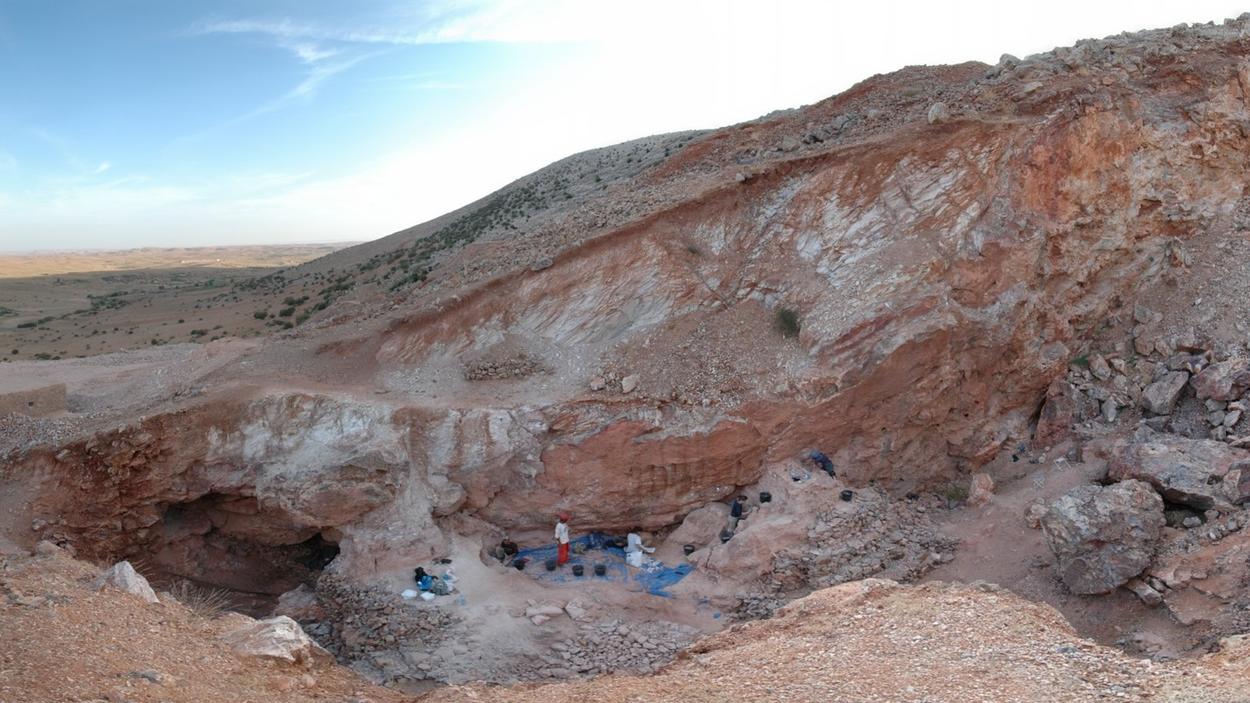
Anthropologists have long sought to pin down the exact location of the proverbial “Garden of Eden” — the region of our planet where the earliest Homo sapiens emerged.
Over the last two decades, a combination of genetic evidence and data from the fossil record have led scientists to conclude that the first members of our species evolved in eastern Africa about 200,000 years ago.
But a new discovery suggests a more complex narrative for the origin of humans.
In a pair of papers published Wednesday in Nature, an international team of researchers describes 22 human fossils from northwestern Morocco that are about 300,000 years old.
According to the authors, it is the earliest evidence of Homo sapiens ever discovered — by a long shot.
The unexpected location of the find, coupled with previous discoveries of early human remains dating back 260,000 years in South Africa and 195,000 years in Ethiopia, casts doubt on the story that the first members of our species evolved in a single region of the African continent, study authors said.
“Our results challenge this picture in a number of ways,” said paleoanthropologist Jean-Jacques Hublin of the Max Planck Institute for Evolutionary Anthropology in Germany, who led the work. “There is no Garden of Eden in Africa, or if there is a Garden of Eden, it’s Africa. The Garden of Eden is the size of Africa.”

This is the first, almost complete adult mandible discovered at the Jebel Irhoud site. The shape of the bone and the teeth clearly assign it to the root of our own lineage, the study authors say.
This is the first, almost complete adult mandible discovered at the Jebel Irhoud site. The shape of the bone and the teeth clearly assign it to the root of our own lineage, the study authors say. (Jean-Jacques Hublin / Max Planck Institute for Evolutionary Anthropology)
With virtual palaeoanthropology, researchers can reconstruct the mandible of a fossil known as Irhoud 11 mandible. It may have belonged to one of the earliest Homo sapiens yet discovered. (Jean-Jacques Hublin / Max Planck Institute for Evolutionary Anthropology)
Not all of the fossils cataloged in the papers are new discoveries. Six of the 22 specimens were first unearthed in the 1960s as the result of barite mining operations at Jebel Irhoud, the archaeological site that is located between Marrakesh and Morocco’s Atlantic coast.

At the time of the initial discovery, scientists concluded that the fossils were about 40,000 years old. However, that date didn’t seem right to many researchers.
“The previous age estimate on the Jebel Irhoud hominin never made sense,” said Curtis Marean, an archaeologist at the Institute of Human Origins at Arizona State University in Tempe, who was not involved in the new work.
The shape of the fossilized bones looked too primitive for their supposed relatively young age, Marean said. In addition, the plant and animal evidence found in the same location as the bones didn’t match the environmental conditions that would have been present in the area 40,000 years ago.
There is no Garden of Eden in Africa, or if there is a Garden of Eden, it’s Africa. The Garden of Eden is the size of Africa.
— Paleoanthropologist Jean-Jacques Hublin of the Max Planck Institute for Evolutionary Anthropology
Hublin and his colleagues also felt that the fossils had been inaccurately dated and wanted to do something about it. They visited Jebel Irhoud several times throughout the 1980s and ’90s, and officially resumed excavations there in 2004.
The researchers believe that the site was once a cave that probably provided shelter to small bands of early humans who came to the area to hunt gazelles and zebra. Their flint tools, sharpened into pointed forms that were probably spearheads, appear to be made from material collected at least 15 miles away.
“This suggests they visited high-quality locations to collect flint and then carried it around to places like Jebel Irhoud where they could stop and retool their weaponry,” said Shannon McPherron, an archaeologist at the Max Planck Institute for Evolutionary Anthropology who worked on the study.
Over the course of its work, the team discovered 18 additional hominin bones, as well as stone artifacts consistent with the dawn of the Middle Stone Age. They also found gazelle and zebra bones that suggested the animals were deliberately butchered and cooked over a fire.
Some of the Middle Stone Age stone tools from Jebel Irhoud in Morocco. Pointed forms (a-i) are common, as are the Levallois prepared core flakes (j-k).
Some of the Middle Stone Age stone tools from Jebel Irhoud in Morocco. Pointed forms (a-i) are common, as are the Levallois prepared core flakes (j-k). (Mohammed Kamal / Max Planck Institute for Evolutionary Anthropology)
The researchers’ biggest stroke of luck came when they found several burned pieces of flint artifacts buried alongside the fossils. The team was able to date the burned flint using a process called thermoluminescence. This allowed them to determine that the fossils were about 300,000 years old, making them the oldest Homo sapien remains ever found.
“That was a big ‘Wow!’” Hublin said. “The new dates convinced us that this material represented the very root of our species.”
Among the newly discovered fossils were an adult skull comprising a distorted braincase and fragments of a face, and a nearly complete adult lower jawbone. There was also one maxilla (which comprises the upper jawbone and the sinus cavity), as well as several teeth and other bits of skeleton.
Further analysis revealed that the 22 specimens came from a total of five individuals — three fairly young adults, one teenager and a child between 7 1/2 and 8 years old.
To be clear, these 300,000-year-old Homo sapiens were not our anatomical twins. Far from it.
The authors write that these early humans had a strange mix of characteristics — some that would be very familiar to us, while others are extremely primitive. For example, their faces were similar enough to the faces of modern humans that if you saw these individuals walking down the street, you would probably not take notice, Hublin said. However, the shape of their braincase suggests they had a large but much more primitive brain than we have today.
A composite reconstruction of the earliest known Homo sapien fossils, found at Jebel Irhoud in Morocco. (Philipp Gunz / Max Planck Institute for Evolutionary Anthropology)
Two views of a composite reconstruction of the earliest known Homo sapien fossils from Jebel Irhoud in Morocco. The reconstruction is based on micro-CT scans of multiple original fossils.
Two views of a composite reconstruction of the earliest known Homo sapien fossils from Jebel Irhoud in Morocco. The reconstruction is based on micro-CT scans of multiple original fossils. (Philipp Gunz / Max Planck Institute for Evolutionary Anthropology)
This implies that different parts of the human anatomy evolved at different rates, the researchers said.
“Some things were fixed early in a modern way and others took a lot longer to reach the modern condition,” Hublin said. “In short, the story of our evolution over the past 300,000 years is mostly the evolution of our brains.”
The story of our evolution over the past 300,000 years is mostly the evolution of our brains.
— Study leader Jean-Jacques Hublin of the Max Planck Institute for Evolutionary Anthropology
Some experts have questioned whether a primitive human with a brain so distinct from our own can still be considered part of the same species. But Richard Potts, director of the Human Origins Program at the Smithsonian’s National Museum of Natural History in Washington, said the team’s contention that it found early Homo sapiens holds water.
“Given the fragmented preservation of the finds, the authors do a good job of analysis,” said Potts, who was not involved with the new work.
He added that although both braincases discovered at the site fall outside the range of those of modern humans, so do several other fossils from Africa and Europe that are clearly Homo sapiens.
“So that’s OK,” he said.
Marean was less certain. “I think we need more data points before whether we can say it is Homo sapiens or not,” he said.
Unfortunately, those data points will probably be hard to come by. Sites this old are extremely rare in Africa, and because of the warm climate, DNA is hardly ever preserved on fossilized specimens.
In the meantime, Hublin and his team said their findings offer a new tale of how, when and where our species emerged.
Jean-Jacques Hublin points to a crushed human skull whose orbits, or eye sockets, are visible just beyond his fingertip.
Jean-Jacques Hublin points to a crushed human skull whose orbits, or eye sockets, are visible just beyond his fingertip. (Shannon McPherron / Max Planck Institute for Evolutionary Anthropology)
“We support the notion that around 300,000 years ago, very early forms of Homo sapiens were already dispersed all over the continent,” he said.
According to this new version of the origin of our species, early humans evolved in relative isolation in different parts of Africa, with occasional periods of connection between different populations that were made possible by environmental conditions much different than those we see today.
For example, between 330,000 and 300,000 years ago, summer monsoon rains fell farther north than usual, causing the Sahara to turn green. That made this large, usually inhospitable landscape a welcoming region of large lakes and grasslands, Hublin said.
Perhaps different groups of early Homo sapiens encountered one another while hunting game, and exchanged technological innovations — as well as DNA.
“Any favorable mutation would spread from one population to another boosted by positive selection,” Hublin said.
Potts said it could be possible.
“This view promoted by Hublin is by no means a slam dunk, but it is feasible,” he said. “It will doubtless be tested over and over by further African fossil discoveries in this important time period.”
The whole story link: L.A. TIMES

Explanation: What would it look like to approach Jupiter? To help answer this, a team of 91 amateur astrophotographers took over 1,000 pictures of Jupiter from the Earth with the resulting images aligned and digitally merged into the featured time-lapse video. Image taking began in 2014 December and lasted just over three months. The resulting fictitious approach sequence has similarities to what was seen by NASA’s robotic Juno spacecraft as it first approached the Jovian world last July. The video begins with Jupiter appearing as a small orb near the image center. As Jupiter nears from below, the planet looms ever larger while the rotation of its cloud bands becomes apparent. Jupiter’s shrinking Great Red Spot rotates into view twice, at times showing unusual activity. Many white ovals are visible moving around the giant planet. The video ends as the imaginary spacecraft passes over Jupiter’s North Pole.

For the third consecutive month, the monthly temperature and year to date ranked second warmest in the 138-year record. At the poles, sea ice extents were at or near record low levels.
Climate by the numbers
April
The average global temperature for April 2017 was 1.62 degrees F above the 20th-century average of 56.7 degrees, according to the analysis by scientists from NOAA’s National Centers for Environmental Information. This was the second highest for April in the 1880-2017 record, behind last year by 0.31 degrees.
Year to date | January through April 2017
The year-to-date average temperature was 1.71 degrees F above the 20th-century average of 54.8 degrees. This was the second-highest for this period on record; 0.34 of a degree cooler than the record set in 2016.


The National Polytechnic Institute (IPN) was able to create a biomaterial to treat injuries caused by skin burn, which regenerates the tissues and prevents infections during recovery.
The Center for Research and Advanced Studies (Cinvestav), Queretaro unit, reported that it is a plant material obtained from shrimp, lobster and lobster waste.
Scientists were able to combine debris with silver nanoparticles to form compounds that upon contact with bone, cartilage and skin cells allow regeneration, as demonstrated with laboratory mice.
“We have found that a burn injury that normally takes 21 days to heal, with this film the healing is three times faster than with conventional treatments,” said Cinvestav researcher Gabriel Luna Barcenas.
He emphasized that the importance of the project is to have achieved the balance, size, shape and composition of an intelligent material that besides allowing the regeneration of the cells prevents the attack by bacteria that can affect the process of healing of a person.
The statement said that with this advance an implant in vitro with cells of the patient to help heal injuries from burns of first and second degree can be generated.


This short film is dedicated to all people who believe in peaceful expansion of our borders.
In the year 1957 the cold war expands to space. The Soviet-Union sends Sputnik as the first manmade object into earth-orbit.
3 years later Yuri Gagarin enters space as the first man in space. The so called “Space Race” seems to be decided.
But in 1961 President Kennedy promised to send American Astronauts to the moon.
The Apollo Project was born. A space ship had to be built that is strong enough to escape earth’s gravitation, land on the moon and bring the crew safely back to earth.
Motion Designer Christian worked with his brother and Composer Wolfgang for 18 months on this shortfilm.
The foundation were thousands original NASA photographies, taken from the Astronauts during the Apollo Missions, which were released in September 2015. It is an animated collage using different techniques to bring the stills to life.
Shortfilm by Christian Stangl
christianstangl.at
Soundtrack by Wolfgang Stangl
wolfgangstangl.com
Photographic Footage:
Flickr Project Apollo Archive
flickr.com/photos/projectapolloarchive/
Original recordings from the Apollo missions:
NASA audio collection
Archive.org/details/nasaaudiocollection

TIME’s new cover: How Trump’s loyalty test is straining Washington https://t.co/4ZQG16wS8f pic.twitter.com/tnng9Wy6km
— TIME (@TIME) May 18, 2017